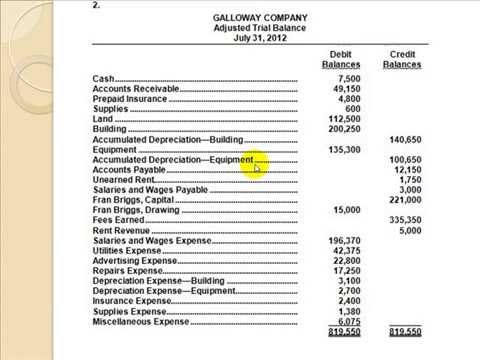
Whether it’s a small business or a scaled one, financial reports on your client’s operations are also crucial documents for your accounting firm. At the early stages of your engagement, it’s the client’s responsibility to ensure you have the documentation you need to be as effective as possible. An efficient onboarding process encourages long-term client relationships, and only a 5% increase in customer retention results in more than a 25% increase in profit. If you haven’t already, create a client profile in your accounting practice management software and CRM—even better if your practice management and CRM are the same tool.
Set up your Clients on QuickBooks
- This previous experience will make the team look competent and confident, reflecting positively on your business.
- Build a working relationship that values clarity, responsiveness, and mutual respect.
- Consider including a brief tutorial or FAQ section to address common questions.
- That’s where having a client onboarding questionnaire comes in handy.
- Develop a customizable bookkeeping client onboarding checklist that can be adapted for different types of clients.
For now, your focus should be on laying a solid foundation, what is cost incurred setting clear expectations, and building a relationship based on trust and mutual understanding. Some ways to make the questionnaire completely digital include using software systems like Google Forms and Typeform. These provide online form building services where you can get pre-built templates. Your clients can also choose answers from pre-filled options, reducing the time and energy needed to give you the necessary information without such a digital platform. By using Copilot’s built-in payment system, you’ll save time on billing and provide a convenient, professional payment experience for your clients.
Used by thousands of accounting firms, every feature in Copilot was designed with your client in mind. It’s a client portal tool that focuses mainly on the client experience. But, at the same time, Copilot also gives you the tools you need to deliver on your services and get paid without any hiccups. By investing time in setting up your client portal before engaging your new client, you’ll set yourself up for a 5-star onboarding experience. Your client will appreciate the effort you’ve put into creating a personalized experience, setting the stage for a successful long-term relationship.
This bookkeeper onboarding checklist includes everything from acquiring consumer information to implementing accounting systems applications of marginal cost and building effective communication strategies. It’s intended to save you time while making the onboarding process simpler and less stressful for both you and your clients. Starting the client onboarding process is like beginning a new adventure. For accounting firms, this adventure starts with really getting to know your new clients.
Basic information and documentation collection
As hard as it may be to believe, sometimes onboarding a new bookkeeping client can be the most challenging thing a bookkeeping firm does. Once your client is in Copilot, and you’ve sent them a link (or email notification) to create their own personal portal, it’s time to send them a contract. In step 0, we want to set the stage so our professionalism and client experience blows away our client.
Meet with the team or team member assigned to the client

This is especially useful for clients who require continuous bookkeeping support and financial management. For example, if you work with families and individuals, you might just need to send an invoice once a year when they file their taxes. Enter all relevant information on the client, including the full company name, address, and preferred contact details.
Plus, with a well-organized client portal, how to calculate working capital turnover ratio you’ll be able to streamline your work, reduce back-and-forth communication, and provide a better overall service to your bookkeeping clients. The first step in your onboarding checklist actually starts before you get your client involved in the onboarding process. Information and documentation on prior year tax returns are another essential checklist item. You need to understand the overall accounting health of the company. To ensure client satisfaction during onboarding, maintain clear and consistent communication.
You could use manual bookkeeping systems or sophisticated accounting software to set up your client’s accounts more swiftly. Either way, just like bookkeeping, your onboarding method determines whether it’s a tedious, manual process or an efficient, streamlined practice. Ensure payroll systems are integrated with the accounting software, including employee details and tax information.
